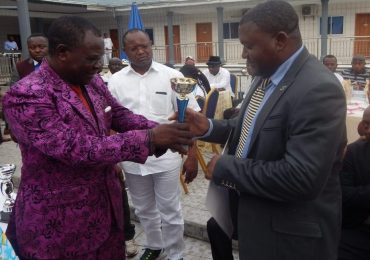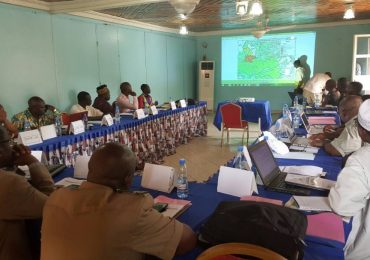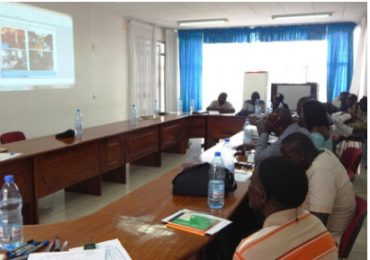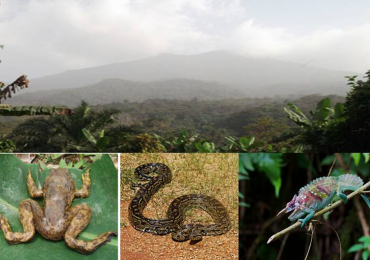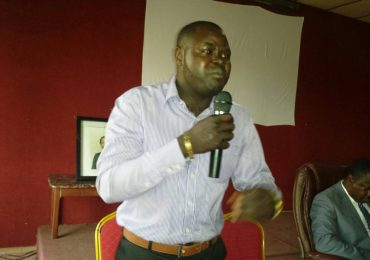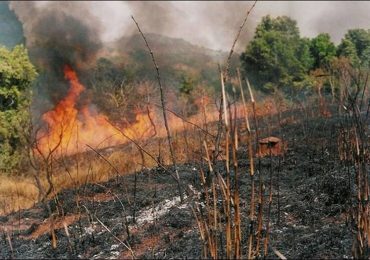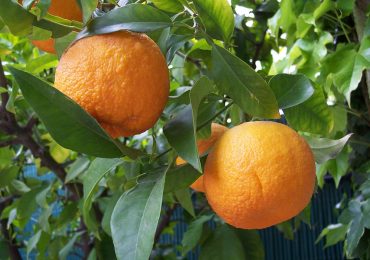Water is unquestionably crucial for the sustenance of life and the development of the society, the economy and the environment. Nevertheless, this prized resource is often managed in very inefficient ways in Cameroon. The increasing water scarcity in Cameroon underscores the great need for more efficient management.
By Ntaryike Divine Jr.
Cameroon is made up of 100 square km of rivers, 34.000 square km of plains liable to flooding, 1.800 square km of natural lakes and 2.800 square km of artificial reservoir waters, plus some 360 km of coast (sea water). An estimated 120 billion cubic metres of waters are buried in underground reserves.
Additionally, Cameroon is blessed with two heavy rainy seasons and is frequently touted to possess Africa's largest hydro-electric potential after the DR Congo, yet less than half of the country’s 20 million people have access to potable water, according to a United Nations Development Program (UNDP) report.
The situation is especially grim in the most populated and rapidly expanding urban centres like Douala were taps dry up for months and people have to depend on water from wells sunk hazardously close to latrines and cesspools.
Others drink water hawked on the streets which come from dubious sources.
Water-related diseases like cholera and typhoid are endemic. 
"Some years back, I had typhoid because of the poor quality of drinking water here in Douala," a resident told The Green Vision.
Many Douala residents admit to having suffered one water-related distress or other.
"I face problems with drinking water here in Douala. I don't drink tap water and I have to buy bottled water. I don't want to come down with typhoid or cholera or anything like that. Each time you turn on the tap, the water is brown," a resident said.
In 2004, a cholera outbreak hit the country killing about 70 people. Douala wasn’t spared – 26 people died in the economic capital. Many feared a recurrence, with more and more people showing symptoms of the disease.
Earlier in 2000, diaorrhea had claimed 30 lives in Douala.
"I think the government has to do something about the quality of water. I have close family members who died two years ago because of cholera," another Douala inhabitant said.
Experts blame water scarcity on rapid population growth, chaotic urbanization, increased agricultural activity, industrial pollution and climate change.
In 2005, a project was sponsored by the French government aimed at renovating Douala’s water network in order to ameliorate the city’s water related health problems. Douala dwellers are still to benefit from potable water.
The Secretary General in the Ministry of Water Resources and Energy, Fritz Gerald Nasako, says the challenges are huge today because the government spent decades grappling with economic crises. So it cut back on public investment, including construction and maintenance of drinking water infrastructure.
"One of these challenges is rapid urbanization. The population increases at a geometric rate and overtakes the capacity we have to supply water. You know, there was a time when the government – because of the economic and financial crisis – did not carry out investment. But government is not folding its hands," Nasako says.
In this vein, government privatized the state-owned water corporation (SNEC) and divided it into Cameroon Water Utilities Corporation, CAMWATER, and Camerounaise des Eaux (CDE) – run by a Moroccan consortium handling distribution.
"Since the privatization of the National Water Corporation in 2007, we have now a new configuration of the sector and many multilateral donors to help us with grants. So now, we have many possibilities to ameliorate the access of the population to potable water," Gaston Meka, communications manager at CAMWATER, said.
Meka adds, "We're constructing a modern water unit. By the end of this year, Douala will have a new production unit and we're also doing social connections for people who don't have enough money to get access to potable water."
To many Cameroonians, these claims are hot air. The water crisis continues to course through the veins of the major towns of the country. Yaounde, the capital, which has been witness to many ceremonies of changing Water and Energy ministers, continues to bear the bitter taste of unpalatable water. Next-door Limbe, sandwiched between the Atlantic Ocean and a well drained mountainous backyard has only benefitted three water projects funded by FEICOM.
“Mokunda and Mokundange, both in Limbe II, benefited two water projects in 2009 and 2011, respectively, tapping water from river catchments up from Mt. Fako,” a FEICOM official told The Green Vision.
“The Mokunda water project cost 127 million francs cfa and that of Mokundange cost 135.890 million francs cfa,” the official added.
The third water project that Limbe has benefited from is found in
Meanwhile, Bonadikombo (Mile Four) in Limbe I benefitted a water project that cost 240 million francs cfa. The water is sourced from the catchment in Ewongo in Buea Sub-Division.
Buea Quagmire
One need not struggle much to feel the plight of Buea dwellers who have for the past couple of years had to do without potable water. Were it not for the Reunification celebrations which is expected to attract a rare visit from the Head of State, the mountainside town, would have perhaps, remained in a quagmire for a long time.
Six months after the deadline for water to start flowing uninterruptedly in the municipality, residents still languish without potable water.
The nightmare experienced by patients and their care-takers at the Buea Regional Hospital Annex bears testimony to the water crisis.
“I don’t really know when this problem of water will ever end in Buea Sometimes, I bring water from our home in Bokova (some 10 km away from the hospital), water which we fetch from a community tap in a neighbouring village (Bwintingi), for my sister to have her bath, flush the toilet and wash the baby’s nappy and other things,” Ciara Limunga, who was taking care of her sister, who had just given birth, said.
At the Male Ward of the hospital, with a toilet emitting an offensive smell, another caretaker, Esther Njenui, said, “There is only one tap in the hospital and water scarcely flows into the wards. So this is how the toilet and bathroom are when we don’t have water. What makes me angry is when they (hospital staff) come shouting at us for leaving the place nasty and stinking. We don’t like living in a smelly and awful environment, but how do we flush the toilet or keep the place clean when there is no water?”
Njeuni said sometimes they are forced to use money meant for drugs and hospital bills to purchase bottled mineral water.
A patient in the Male Ward, John Nchanji, seemed consoled by the rainy season.
“This water problem is even better now in the rainy season because at least we carry run-off from the roof to flush the toilet and clean our things. Last year in October, when I was here, it was very difficult to have a drop of water in the hospital. It is the ambulances that used to move around the town to fetch water for us,” Nchanji told The Green Vision.
The hospital staff generally admit that there is a water problem and also seem relieved by the rains.
“We are faced with a water crisis but the impact is not really felt in the rainy season as we collect water from the roofs to clean the hospital,” said Ayuk Martha, a cleaner at the Paediatrics Unit.
She said the situation is always so severe in the dry season that they have to beg patients and caretakers for water to keep the wards clean.
The Sanitary Technician of the Health and Sanitation Unit of the hospital, Mrs. Tataw Rose, blamed the water crisis on the water utility company, CAMWATER, and not the hospital.
“When we used to have this problem, a technician always came from CAMWATER and solved it but the man retired and was replaced by a woman, who is more of an administrator than a technician,” Mrs. Tataw said.
She said to minimize the water problem, the hospital has installed a tap and built a tank which the ambulance constantly fills with water but doubted the efficiency of these alternatives.
“Water scarcely flows to the wards. This is still not helpful as patients and their caretakers waste time and spend energies to fetch water from the tap is really time wasting and energy consuming,” she added.
The present water supply in Buea (3000 cubic metres per day) was intended to serve a population of about 50.000, which now stands at over 200.000 and is still increasing.
Bamenda Dilemma
The severity of water shortage is felt in Bamenda neighbourhoods like Abangoh, New Layout, Sisia Quarter, Upper Bayelle, Foncha Street and Akokikang-Mankon.
“Our tap flows only during the rainy season. During the dry season we go for weeks and sometimes months without water. I have to trek everyday more than a mile to fetch drinkable water. We are really suffering here at Ntaghang,” said 22-year-old Tufon Cynthia.
Many residents around Nchobou and Akokikang have resorted to nearby springs on which they depend for water to wash laundry, bathe and even to cook.
Regrettably, the sanitary state of these springs is questionable.
“I had to take my two-year-old son to the hospital and spend a lot of money because he drank contaminated water from this nearby stream. The doctor said he contracted motile bacteria from the bad water consumption,” Njini Berlinda said.
She added, “We don’t know what the problem is but if it’s rationing, they should make it fair. They should give us water during the day and not always at night.”
Another resident of the same neighbourhood complained, “The water bills are higher than before. You don’t have water for a week yet the water bills are doubled. They should stop imposing high bills on us.”
An inhabitant of Meta Quarter, Joseph Chenjo recounted, “We have sunk wells to contain the situation here at Meta Quarter. We have been living with this misery for years now and we are used to not having potable water. We used to benefit from the Abangoh water project but since our pipes were destroyed during the construction of the roads, we were cut out.”
Bamenda used to have public taps but today, almost all the taps have been plugged.
The Green Vision learnt that the project was managed by the council and after accruing huge debts, the authorities of CDE sealed the taps.
Money derived from the sale of water was reportedly never paid to CDE.
Despite countless watershed protection schemes designed by government and NGOs through conservative farming, afforestation/reforestation and agro-forestry, the situation is barely yielding fruits in some areas.
The Northwest Regional Delegate for Water Resources and Energy, Moki Ngando Emmanuel, said the major setback is not the production of water but rather its distribution.
“Many undulating areas can’t have water because it would need much pressure to pump it uphill. Our situation hasn’t reached a crisis point,” he said.
In the face of the nationwide water crises, the World Bank and the African Development Bank are funding multi-million-dollar projects to try and improve access to safe drinking water.
Bertrand N. Sancho and Ngoran Guilio Berngeh Forwang contributed to this article



